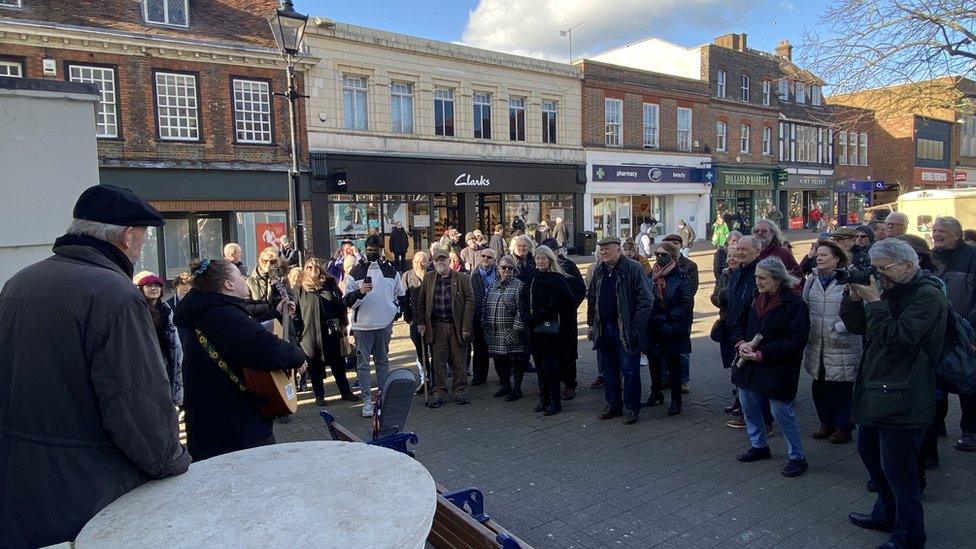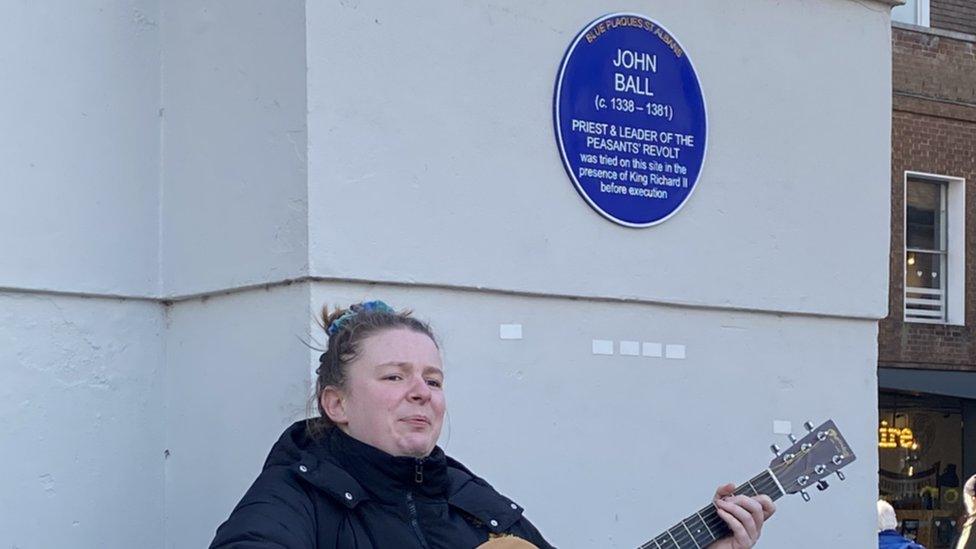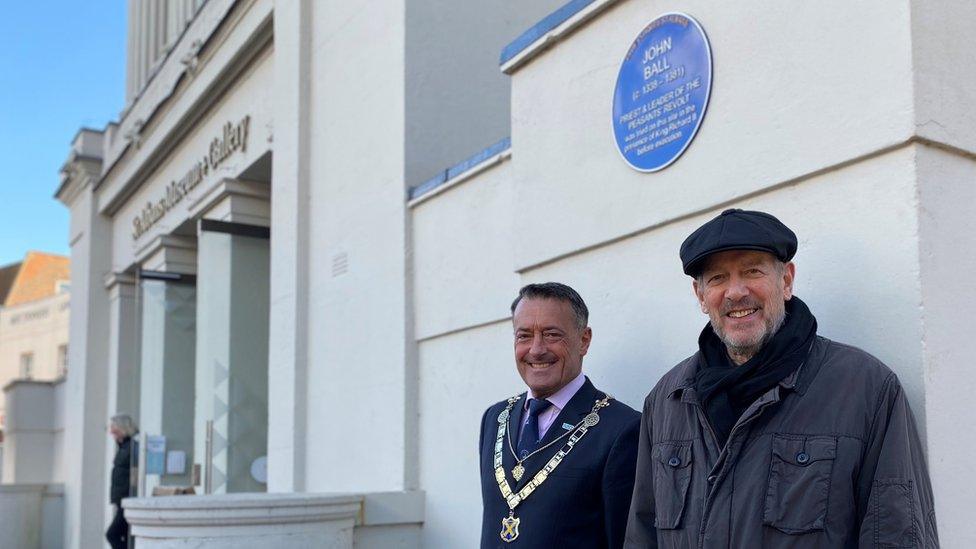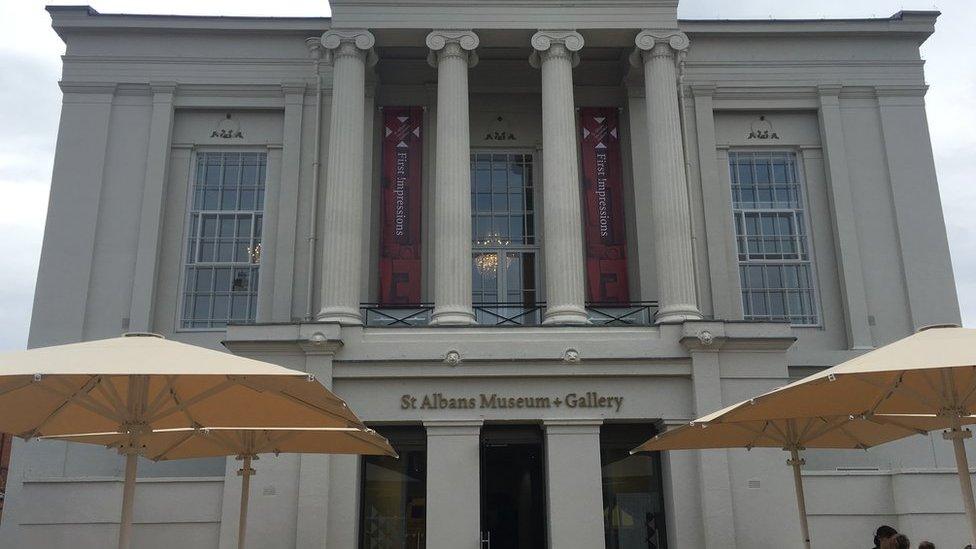St Albans blue plaque unveiled for Peasants' Revolt leader
- Published

Tim Boatswain, chairman of Blue Plaques St Albans, said plaques in the city for famous men and women were "few and far between"
A blue plaque has been unveiled to commemorate John Ball, the leader of the Peasants' Revolt of 1381.
It has been placed on the St Albans Museum and Gallery in Hertfordshire - the site where he was tried.
It was presented by the Blue Plaques St Albans (BPSA) group, external, formed to remember famous people who lived and worked in the city.
The priest and poet lived from 1338 until he was executed in 1381.

A crowd gathered to see the plaque unveiled in the centre of St Albans
His uprising was the first great rebellion in English history, in response to low pay and the introduction of an unpopular poll tax.
It was unsuccessful but nearly caused the unseating of King Richard II.
Ball was tried at the city's Moot Hall, which was later replaced by the town hall building, now the museum and gallery.
He was hung, drawn and quartered in St Albans in the presence of King Richard II on 15 July 1381.

Folk singer Lizzy Hardingham sang a rendition of the John Ball song at the ceremony
The group's chairman Professor Tim Boatswain said there were "many more people who should be commemorated".
"We have identified and selected the first nominees, along with buildings and places associated with them, and we will be installing blue plaques to celebrate their connection with our great city - people include Sarah Churchill, the Duchess of Marlborough, and Stephen Hawking, the theoretical physicist, cosmologist and author," he added.
Mandy McNeil, from St Albans BID, said the scheme would "not only be a celebration of some of the unique residents in our rich history, but also a fantastic new attraction supporting our city's visitor economy and footfall".

The blue plaque is on the wall of St Albans Museum and Gallery

Find BBC News: East of England on Facebook, external, Instagram, external and Twitter, external. If you have a story suggestion email eastofenglandnews@bbc.co.uk, external
Related topics
- Published25 February 2022

- Published8 June 2018
